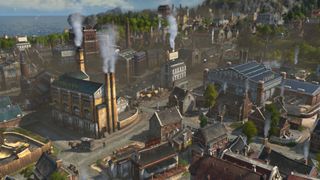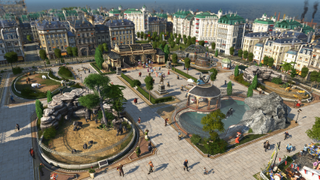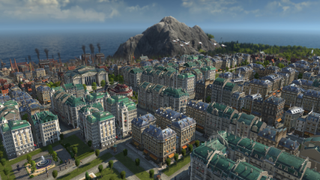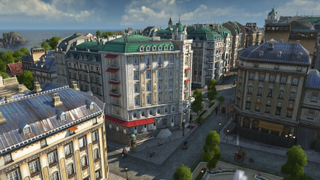
It was all going well until my potato farm exploded. There I was, erecting a few villager houses on the outskirts of my burgeoning milltown, when suddenly, ka-blam! Fire and mash everywhere. I’m still somewhat mystified by this turn of events. I mean, how do you blow up a potato farm?
The scene is chaos. People are screaming, and several nearby buildings have caught fire. I immediately deploy the volunteer fire brigade to douse the conflagration, but the local newspaper pounces, publishing its latest edition. Front page story? My entirely inadequate response to the potato farm explosion, which occurred precisely five minutes ago and was the least predictable event in the history of everything.
I could edit the paper to make myself look better, but as an advocate of the freedom of the press, I let the rag publish. Immediately my city’s productivity plummets, and with it my income. I spend the next half hour clawing my way back into the black, all because of some surprise chips.
It’s elements like this that make Anno 1800 such an intriguing city-builder. As the title suggests, the game takes place on the cusp of the industrial revolution, a time of great social, political and economic upheaval. As with most games of its ilk, it’s mainly a placid, gently enjoyable affair. But like those radically changing times, there’s always a sense that you’re one potato explosion away from disaster.

It’s also a game of impressive infrastructural depth. Your city evolves not just in size but through time. You start out building a glorified farming village, a place of dirt-roads and grazing fields, sawmills and fishing harbours. Then, gradually, your stone farmhouses are converted into brick worker tenements, and your infrastructure grows to accommodate brickmakers, steelworks, and sausage factories.
The strategic side largely takes the form of establishing production chains. Goods often need to go through multiple stages of production, so it’s wise to build your textile mills and sailmakers close to your sheep farms, for example. All goods are stored in the nearest warehouse (which makes them available at all warehouses) and sold at markets, so it’s important to build plenty of both building types around your city.
Unlike the clean but cold Anno 2205, Anno 1800 also has an eye for the human side of city-building. Whether playing in sandbox mode or through the campaign, it’s up to you how you treat your workforce. You can prioritise worker happiness at the cost of a slower production rate or grind the proles beneath your industrial millstone for greater profit. Choosing the latter option comes at the risk of civil unrest, however, as workers can unionise and ultimately strike.
The biggest gaming news, reviews and hardware deals
Keep up to date with the most important stories and the best deals, as picked by the PC Gamer team.

Other outside factors that can influence your city’s progress include trade, war, and pollution. Anno 1800 has a substantial maritime component, letting you build fleets of ships to explore the map and trade with other city-states themed around different nationalities like China. There’s no land-based combat in Anno 1800, but fleets can fight each other in real-time 3D battles, in which pre-industrial sailing vessels can trade cannon fire with ironclad steamships.
All told, Anno 1800 feels like a richer, more lavish and more human game than Anno 2205. But there are a few concerns. Your citizens don’t seem to interact with the city’s infrastructure much, so it doesn’t matter where you place different types of housing for different kinds of workers, only that you have sufficient housing. Also, economic management is somewhat obscure. It’s not hard to set up those production chains. But if you’re losing money, it can be difficult to figure out where the problem lies.
With so many games due out in February and March, Anno 1800 was barely on my radar. But playing it has left me with a hunger for more, as well as a curious craving for crisps.

Most Popular



